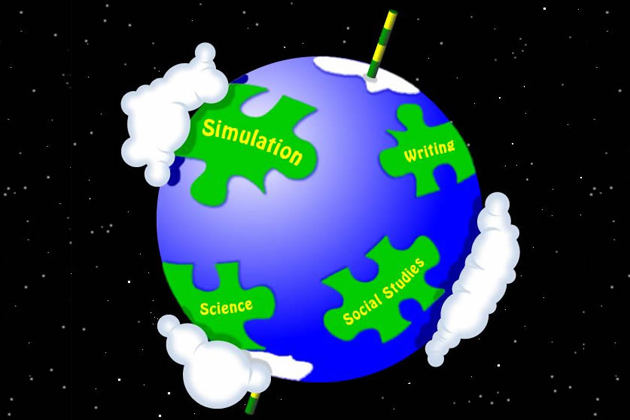
A $3.5 million federal grant will enable more than 8,000 middle school students in Connecticut and Illinois to participate in the groundbreaking GlobalEd2 social studies simulation developed by University of Connecticut researchers.
The grant, from the U.S. Department of Education’s Institute for Educational Sciences, will fund a study over the next four years to track the academic progress made by seventh- and eighth-grade students who take part in the 14-week program, known as GE2. Their progress will be compared to students participating in a more traditional classroom environment. Ultimately, one of the program’s creators says, the goal is to see GE2 expand across the country.
Last month, 20 teachers from Connecticut and Illinois took part in the online training required for the GE2 program, which uses technology available in most schools to run a computerized, interdisciplinary social studies game. Next year, 36 more will be trained in the simulation, which requires classrooms to represent assigned countries and, via online simulations, emails, and other web-based interactions – work with other “countries” to solve water shortages, climate change, the spread of disease, and other real-world problems. To date, more than 5,000 students in Connecticut and other states have completed the program.
“We’re thrilled, because one of the many results of the pilot program was the elimination of the academic gap that, at the start, existed between African-American and Latino students from low-income, urban schools and their Caucasian, suburban counterparts,” says Scott Brown, professor of educational psychology at UConn’s Neag School of Education.
“If we have the same kind of amazing response during this next phase, there’s a real possibility we can take GE2 nationwide,” says Brown, who facilitates the program with Kimberly Lawless, who received her doctorate from the Neag School and is currently chair of the department of educational psychology at the University of Illinois-Chicago’s College of Education.
Improving science and global literacy skills
Monitored by Neag doctoral students experienced in international relations, GE2 students are assigned writing tasks, questions, and problems designed to educate them about their country’s geography, government, economics, culture, health challenges, and human rights issues. They then need to not just come up with a solution for the science-based crisis they’ve been assigned, but develop a multinational agreement.
“One of the best parts is that most of the kids want to do it because it’s fun,” Brown says. “In many respects, it’s like video gaming – and when you’re able to come up with a hard-to-find solution or negotiate a deal with another country, it’s exciting. For educators, it’s an empowering and innovative way to transfer knowledge, engage students in meaningful learning, and meet demands for improved literacy, math, and science skills.
“The electronics and technology available today mean that we don’t need more than a handful of people to keep GE2 up and running for 56 classrooms or even more,” Brown adds. “All the content is created in advance with the help of UConn and University of Illinois faculty, so students are making real decisions based on real data, and all our communications with them are virtual.”
Since its creation by Brown and UConn political science professor Mark Boyer in 1998, GE2 has been used by public school teachers in 14 states, two countries outside the U.S., and 35 Connecticut towns. Results from pre- and post-program evaluations of students include not just improved critical thinking and problem-solving abilities, but:
- Increased interest in science and global issues;
- Greater ability to work collaboratively;
- Improved oral communication skills;
- Better understanding of technology’s use in education.
Perhaps most significant, Brown says, was the notable improvement in students’ “scientific literacy” and persuasive writing skills. Writing quality and self-efficacy scores of low-income, urban students in many cases doubled because they wrote for GE2 every week.
Helping close the achievement gap
“The difference GlobalEd2 can make in writing is huge,” Brown says. “In most instances, by the end of the program, we can no longer use writing scores to tell which students are from low-income urban schools and which are from affluent suburban ones, because we’ve closed the achievement gap and their writing abilities are nearly the same. That’s pretty incredible and one of the many things we’re excited about.”
Also significant, he says, is that as students use GE2 to become decision makers, researchers, inventors, and community leaders, they learn about real countries, real governments, and “some of the very real problems our world faces today.”
“We know that not all students will leave the program with an interest in science,” Brown says, “but all of them will leave as better global citizens than they entered. Hopefully they’ll realize that, and learn from GE2 the importance of being a good citizen. Issues like climate change and the need for alternative fuel sources don’t just affect some people, but all people – including them.”




